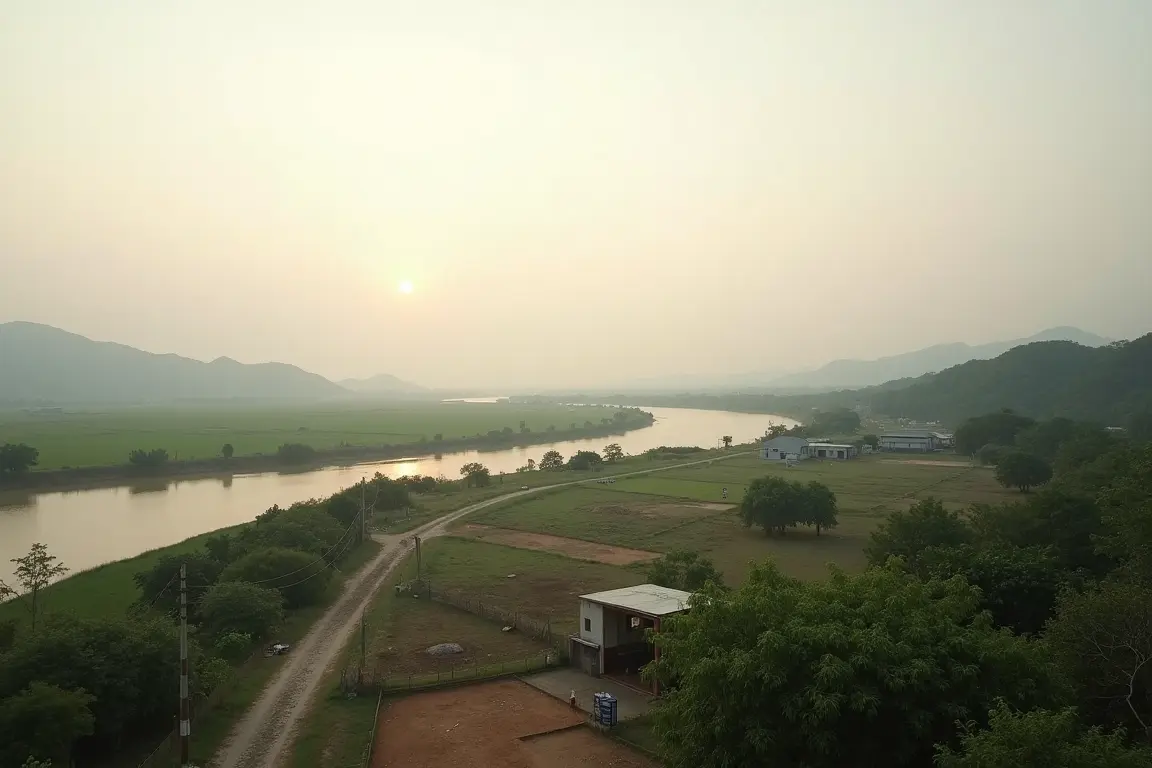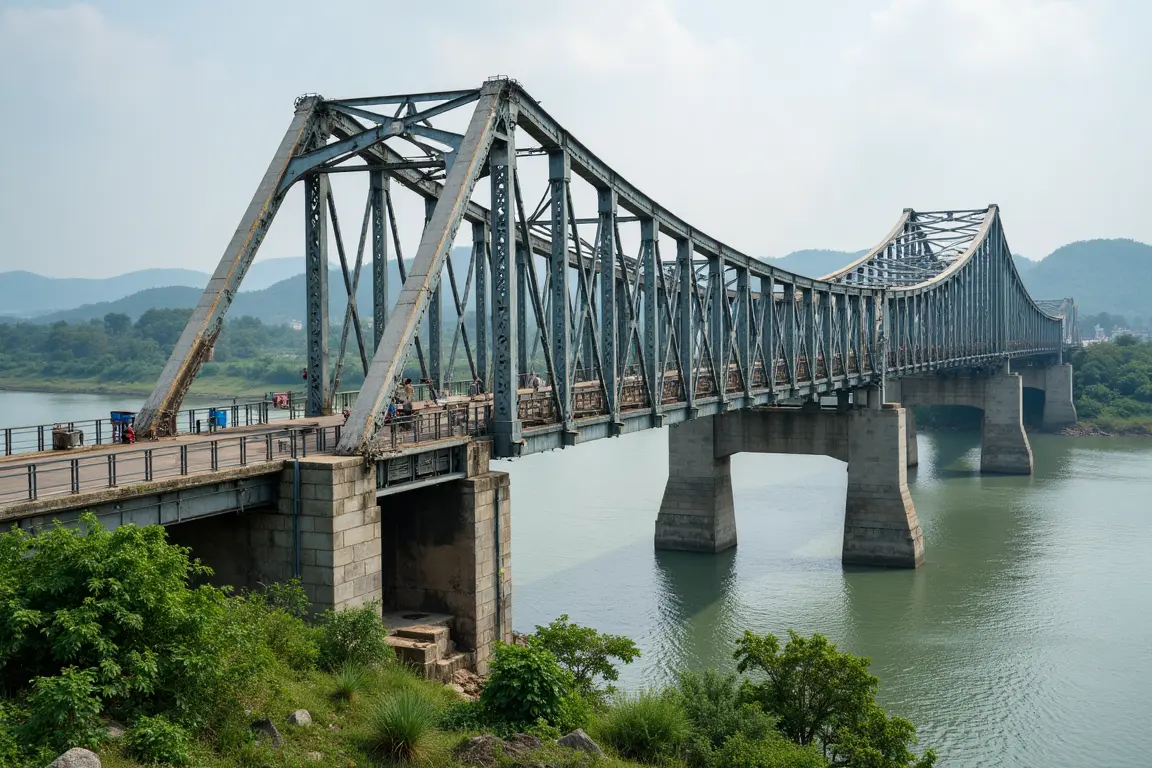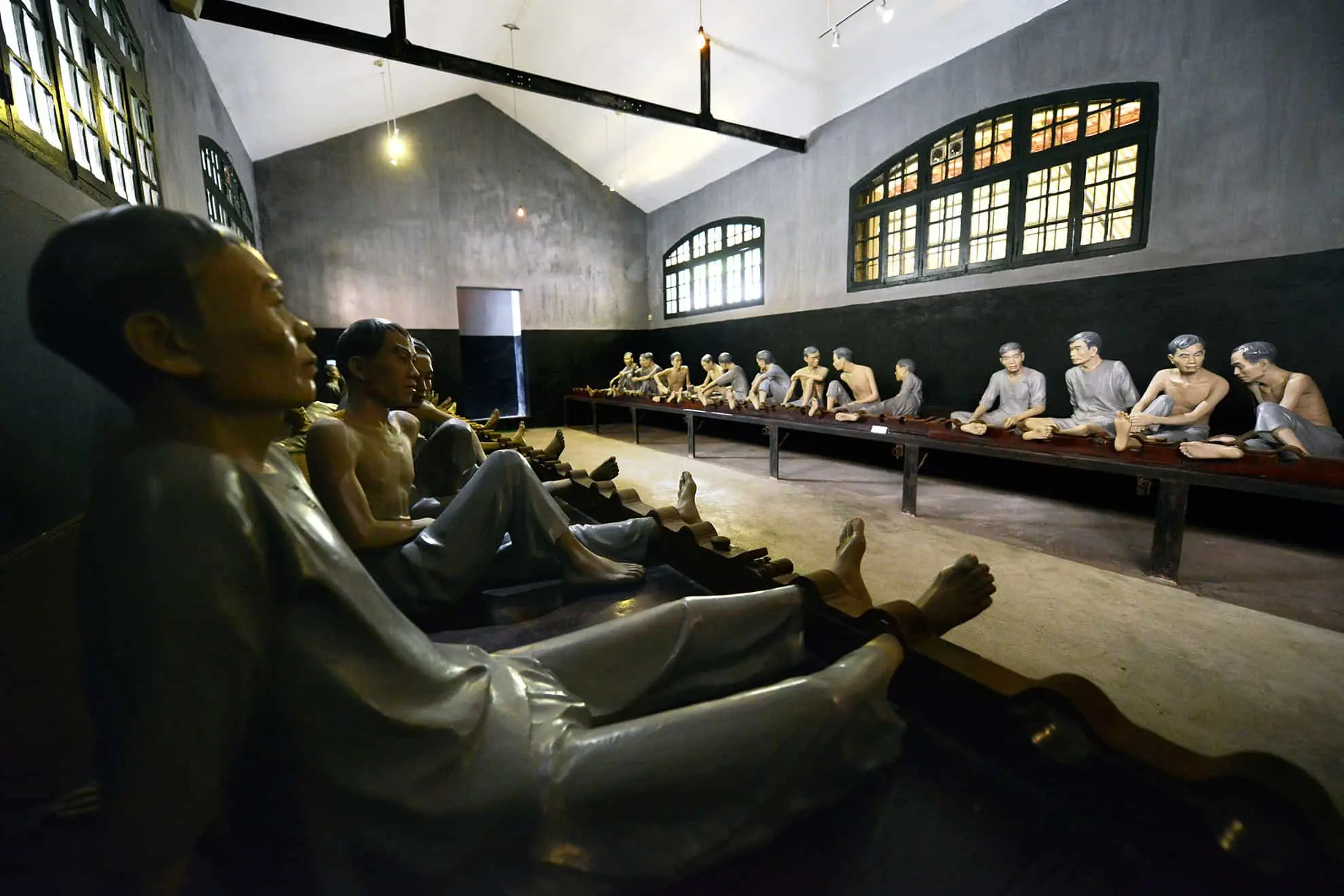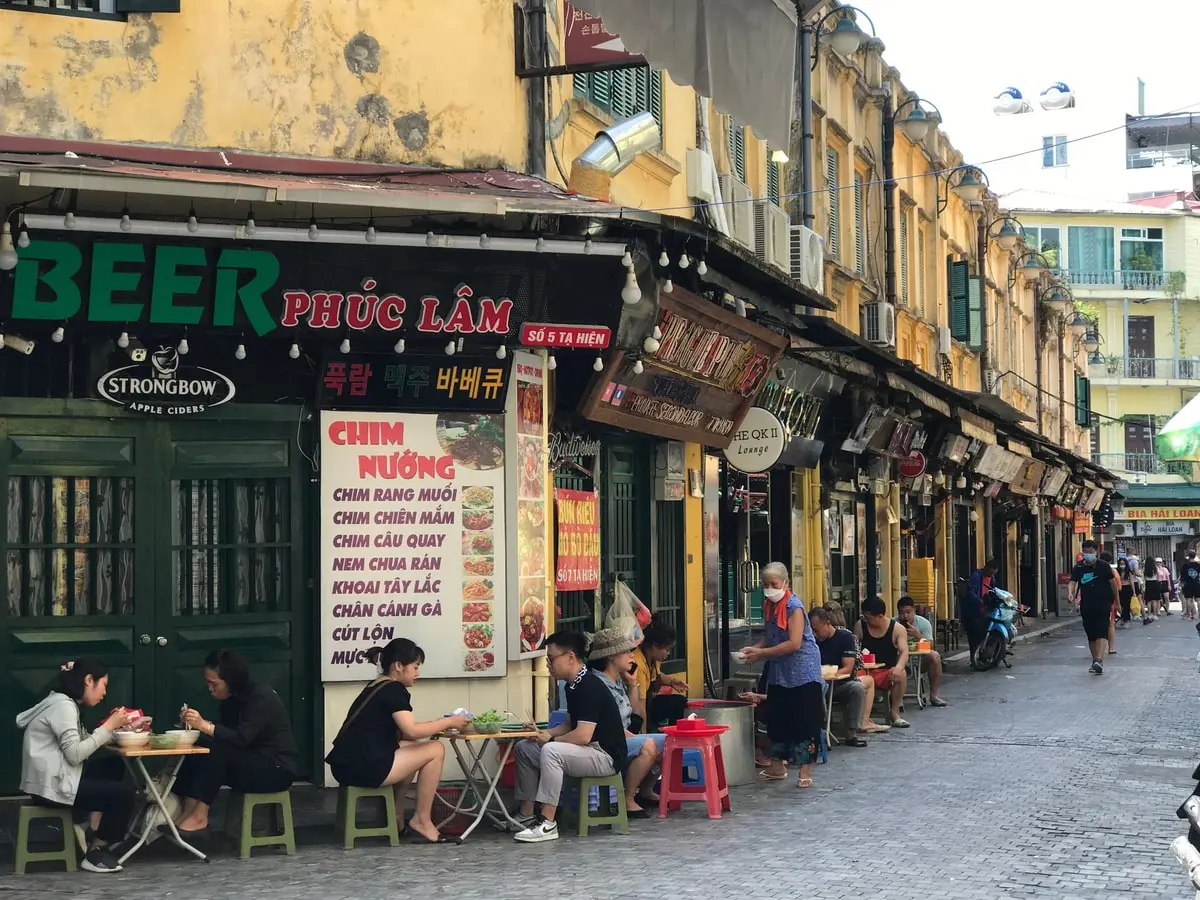The vietnam dmz, or demilitarized zone vietnam, stands as a poignant reminder of a nation divided and the enduring quest for a unified territory. This strip of land, carved across Quang Tri Province, became one of the most intensely contested areas during the 20th Century Conflicts, specifically the Vietnam War. EssentialVietNamtravel.com invites you to explore the dmz vietnam, not just as a geographical line, but as a place deeply etched in Vietnamese History and the broader narrative of the Cold War.
Understanding the vietnamese demilitarized zone involves looking at its origins, the battles fought, and its current status as a historical site. The dmz of vietnam, though intended as a peace zone, witnessed immense conflict. Today, visiting the former north vietnam south vietnam border offers a profound insight into the struggles for peace and the lasting impact of war. We will delve into the history, the key locations, and the human stories that define the dmz in vietnam. The establishment of the demilitarized zone vietnam war era relic shaped modern Southeast Asia.
Understanding the Vietnam DMZ: Its Origins, the 17th Parallel, and Impact During the Vietnam War

The Vietnam DMZ, a term synonymous with the brutal realities of the Vietnam War, did not emerge from a vacuum. Its creation was a direct consequence of international decisions made far from the rice paddies and mountains of Quang Tri Province. The Geneva Accords of 1954 formally established the Vietnam DMZ. The year 1954 is pivotal in understanding the DMZ’s origins. These accords, signed after the First Indochina War, aimed to bring a temporary cessation of hostilities and chart a path towards a unified Vietnam.
The Geneva Conference 1954 resulted in the temporary division of Vietnam. The primary purpose of the Vietnam DMZ was to separate North and South Vietnam. This division was intended to be a short-term measure, a buffer to allow for the disengagement of warring forces.
The Vietnam DMZ was defined by the 17th Parallel. This line of latitude became the demarcation line, stretching from the Laotian border to the coast of the South China Sea. The zone itself had an approximate width of 10 km, extending roughly five kilometers on either side of the Ben Hai River, which largely followed the 17th Parallel North. The intention was for this area to be a true demilitarized zone, free from military presence and fortifications. Foreign powers influenced the establishment and the subsequent hardening of this border. It was hoped this would be a step towards a peace zone.
However, the political realities of the Cold War soon transformed this intended buffer. Instead of facilitating reunification, the DMZ became a stark symbol of a divided nation and a focal point of the escalating conflict between North Vietnam, supported by communist allies, and South Vietnam, backed by the United States and its allies. The Vietnam DMZ significance in the Cold War cannot be overstated; it was a frontline in the global ideological struggle.
The DMZ quickly shed its “demilitarized” label, becoming one of the most heavily militarized and fortified borders in the world. Barbed wire, bunkers, and artillery positions became common sights. The associated conflict, the Vietnam War, turned the DMZ and the surrounding areas into a major battleground. The DMZ was part of the Vietnam War, witnessing countless skirmishes and major military operations. The Geneva Accords cause DMZ creation, but the hope for a peaceful, integrated area quickly faded.
The 17th Parallel arbitrary line solidified into a tangible barrier, and the zone intended to be demilitarized became a landscape of intense conflict. The DMZ separates North South Vietnam became a stark geographical and political reality. The historical significance of this division is profound, representing a painful chapter in Vietnamese History and 20th Century Conflicts. Understanding the Vietnam DMZ meaning requires grasping this complex origin story. The Vietnam DMZ history is deeply intertwined with these geopolitical events.
Exploring Key Landmarks Within the Vietnam DMZ: Hien Luong Bridge, Ben Hai River, and the Vinh Moc Tunnels

Visiting the Vietnam DMZ today offers a tangible connection to its tumultuous past. Several key landmarks within Quang Tri Province serve as powerful testaments to the division and the resilience of the human spirit. EssentialVietNamtravel.com highlights these sites as crucial stops on any Vietnam DMZ tour or for anyone seeking to understand what to see in vietnam dmz. A vietnam dmz map 17th parallel will often pinpoint these iconic locations.
The Hien Luong Bridge is perhaps the most symbolic structure within the Vietnam DMZ. This steel bridge spans the Ben Hai River, the key river that formed part of the Vietnam DMZ boundary. During the division, the Hien Luong Bridge was painted in two different colors – yellow on the southern side, red on the northern – a stark visual representation of the divided nation. The Hien Luong Bridge symbolized national division. It became the stage for a “flagpole war,” where both North and South Vietnam continually tried to hoist a taller flagpole with a larger flag, a psychological battle played out for the world to see.
Crossing this bridge, or what remains and has been reconstructed, is a moving experience. The Ben Hai River itself, flowing gently through the landscape, was the natural feature that the 17th Parallel largely followed, making it a key river in the DMZ’s geography. Its banks witnessed sorrowful partings and hopeful, though often dangerous, attempts at communication across the divide.
Further inland, yet critically linked to the DMZ experience, are the Vinh Moc Tunnels. Located near the Vietnam DMZ, these tunnels tell an extraordinary story of civilian endurance. Unlike the Cu Chi Tunnels near Ho Chi Minh City, which were primarily used by Viet Cong soldiers, the Vinh Moc Tunnels were constructed by the villagers of Vinh Moc. Their purpose was civilian shelter, a way to survive the intense bombing campaigns conducted by the United States military.
Life in these tunnels was a testament to human ingenuity and determination. Entire communities lived underground for years, creating a complex network that included living quarters, kitchens, wells, and even a maternity ward where 17 children were born. Visiting Vinh Moc Tunnels near DMZ provides a profound understanding of the human impact of the war. The tunnels are a reminder that the conflict was not just fought by soldiers but deeply affected ordinary people.
Other significant locations in and around the DMZ include the former Khe Sanh Combat Base, located near the DMZ western end. Khe Sanh was the site of a major siege in 1968, a pivotal event in the Vietnam War. Dong Ha, the provincial capital of Quang Tri, served as a crucial US Marine combat base and logistical hub. The Quang Tri Citadel, an ancient fortress, also saw fierce fighting, particularly during the Easter Offensive in 1972.
Exploring these sites, often included in history of vietnam dmz tours, helps piece together the complex military and human drama that unfolded in this heavily mined area, a site of intense battles and a potent symbol of national division. These locations contribute to the DMZ’s current status as a historical site and a key destination for war tourism Vietnam, offering a chance to reflect on the past and the enduring peace aspiration.
Planning Your Journey to Vietnam?
Find the best flight deals to Central Vietnam (Phu Bai Airport – HUI or Dong Hoi Airport – VDH) and start your historical exploration.
The Dividing Line: Life and Conflict Across the Vietnam DMZ’s 17th Parallel and Ben Hai River

The Vietnam DMZ, established along the 17th Parallel and demarcated by the Ben Hai River, was intended to be a temporary buffer, a non-conflict zone. However, the reality of the Vietnam War transformed it into one of the most dangerous and heavily contested strips of land on earth. Life across this dividing line North South Vietnam was characterized by constant tension, fear, and the ever-present shadow of conflict. The zone, far from being demilitarized, became a militarized frontier, a symbol of the ideological chasm splitting the nation and the wider Cold War.
For the people living in Quang Tri Province and on either side of the Ben Hai River, the division was not an abstract political concept but a daily, painful reality. Families were separated, traditional trade routes were severed, and communities found themselves on the front lines of a brutal war. The United States Military and the forces of South Vietnam maintained a strong presence south of the DMZ, while North Vietnam and Viet Cong forces operated to the north and often infiltrated the south. This proximity meant that the DMZ and its surrounding areas were a constant site of intense battles. The DMZ conflict zone resulted in countless casualties, both military and civilian.
The landscape itself bore the scars of war. The area became a heavily mined area, with millions of landmines and unexploded ordnance (UXO) scattered across fields and forests. This unexploded ordnance risk remains a dangerous legacy even today, decades after the war ended. Barbed wire, bunkers, artillery emplacements, and watchtowers defined the physical manifestation of the division. The infamous McNamara Line, a high-tech barrier intended to prevent infiltration from the North, ran south of the DMZ, further underscoring the intensity of the efforts to control this border.
The human impact was devastating. Beyond the direct casualties, communities suffered from displacement, loss of livelihood, and the psychological trauma of living in a perpetual war zone. The lingering effects of Agent Orange, a defoliant used by the U.S. military, also contributed to health problems and environmental damage in the region.
Despite the dangers, life found ways to adapt. The construction of the Vinh Moc Tunnels is a prime example of this resilience, where civilians created an underground world to survive the relentless bombardment. Propaganda warfare was also a constant feature, with loudspeakers blaring messages across the Hien Luong Bridge and the Ben Hai River, each side trying to sway the hearts and minds of those on the other.
The 17th Parallel was more than just a line on a map; it was a painful wound on the body of Vietnam, a symbol of national division that inflicted deep scars. The conflict here was a microcosm of the larger Vietnam War, highlighting the strategic importance of this narrow strip of land and the immense human cost of the division.
Legacy of the Vietnam DMZ: From Vietnam War Battlefront to a Cold War Symbol and Historical Destination

The fall of Saigon in 1975 marked the end of the Vietnam War and the beginning of Vietnam’s reunification. With this, the physical division enforced by the Vietnam DMZ ceased to exist. However, the legacy of this heavily contested border, a potent Cold War symbol, continues to shape the region and the collective memory of Vietnam. What was once a major battleground Vietnam War has transformed into a significant historical site and a destination for those seeking to understand this critical period of 20th Century Conflicts. Today, the Vietnam DMZ’s current status is primarily that of a historical site, attracting visitors from around the world.
The immediate post-war years focused on healing and rebuilding a nation scarred by decades of conflict. The desire for a unified territory, long a peace aspiration for millions, became a reality. The former DMZ, once a symbol of division, was gradually integrated back into a single Vietnam. However, the remnants of war were, and in some cases still are, very real. The unexploded ordnance risk remains a significant challenge, requiring extensive and ongoing clearance efforts to make the land safe for agriculture and daily life.
The Agent Orange lingering effects continue to impact communities, with generations suffering from health issues and birth defects. There are even ghost town remnants in some areas, silent witnesses to the ferocity of the fighting.
Despite these challenges, the region around the former Vietnam DMZ has shown remarkable resilience. War tourism Vietnam has become an important aspect of the local economy, with many people visiting sites like the Hien Luong Bridge, Vinh Moc Tunnels, Khe Sanh Combat Base, and the Ben Hai River. These Vietnam DMZ tours, often guided by individuals with personal connections to the war, offer profound insights into the historical significance and the human impact of the conflict. EssentialVietNamtravel.com encourages respectful tourism that acknowledges the sacrifices made and supports local communities.
Visiting the Vietnam DMZ offers a chance to reflect on the futility of war and the importance of peace. The area is no longer an open border in the sense of a national frontier, but it represents the journey towards an integrated area, a peace zone achieved after immense struggle.
The DMZ also holds potential for ecotourism, as the landscape, slowly recovering from the devastation, reveals specific flora adaptations. The focus has shifted from demarcation and buffer to remembrance and education. The historical significance of the Vietnam DMZ as a focal point of the Vietnam War and the Cold War ensures its place in global history. It stands as a testament to the division that was deemed necessary by some, the arbitrary nature of lines like the 17th Parallel, and the profound influence of foreign powers.
For EssentialVietNamtravel.com, sharing the story of the Vietnam DMZ is about honoring the past, understanding its complexities, and fostering a deeper appreciation for Vietnam’s journey towards the unified territory it is today.



